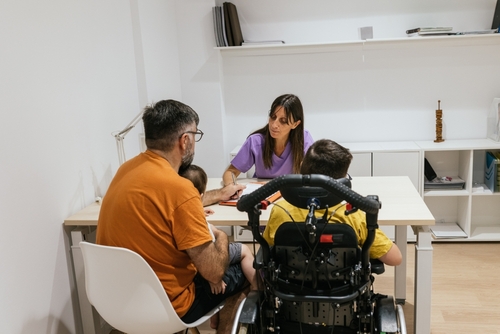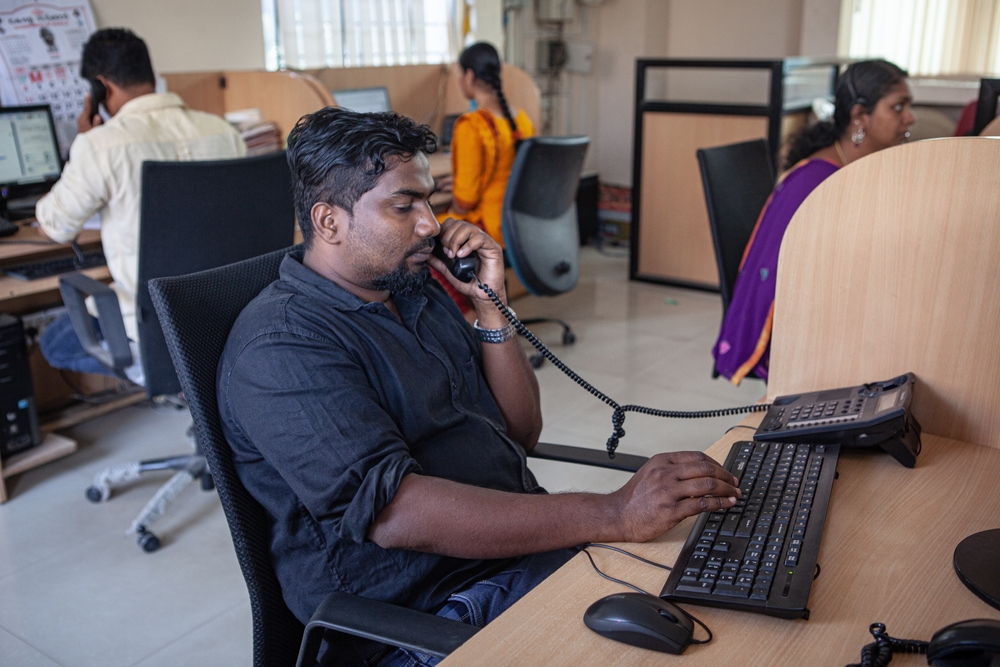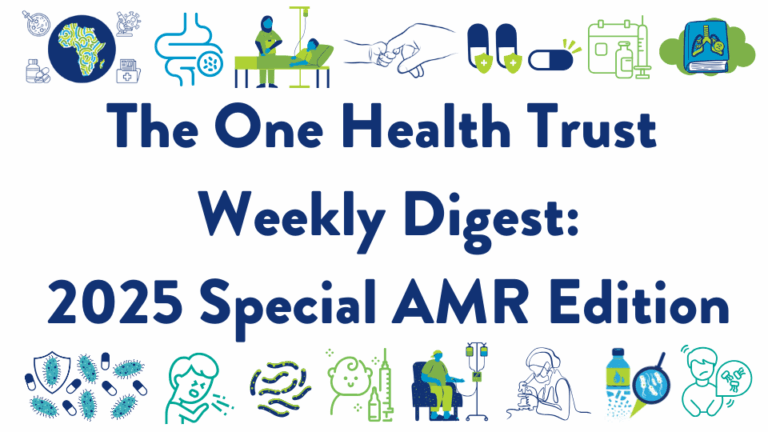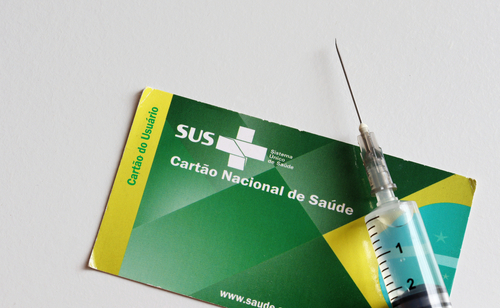May 17, 2023

Protecting crops from fungal disease requires more investment and innovation.
Despite growing attention to fungi’s impact on human health, crops – particularly the world’s top five calorie crops – are increasingly affected by fungal disease but do not receive the same research funding as human fungal infections. Agricultural practices such as monoculture farming (growing only one type of crop on a field at a time), allow fungi to evolve resistance mechanisms and reduce the efficacy of antifungal agents. Farmers should diversify their crops and rely on more innovative genetic techniques and natural antimicrobial compounds to protect crop yields and meet the nutrition needs of the growing human population. [Nature]
FDA-approved fecal microbiota product to reduce bacterial infection recurrence
The US Food and Drug Administration (US FDA) approved Vowst, a novel human fecal microbiota product designed to prevent the recurrence of Clostridiodes difficile infection (CDI) in individuals aged 18 years and older. A randomized, double-blind clinical study found a 12.4 percent rate of CDI recurrence compared to 39.8 percent in placebo-treated participants. Some common side effects reported by Vowst-treated participants include abdominal bloating, fatigue, diarrhea, and chills. [US Food & Drug Administration]
Lower socioeconomic background is associated with greater exposure to air pollution in São Paulo.
Researchers assessed the bias of pollution monitoring stations in São Paulo, Brazil, in estimating individuals’ exposure to air pollution depending on their socioeconomic conditions. They measured the amount of black carbon in the lungs of 604 deceased São Paulo residents and used this to estimate PM10 concentrations. A significant association between higher PM10 levels and lower socioeconomic status (SES) was revealed, confirming previous reports linking individuals living in poorer neighborhoods in São Paulo with greater exposure to air pollutants. The amounts of black carbon recorded in individuals with lower SES were greater than predicted by the city’s pollution monitoring stations, indicating that current surveillance systems underestimate the burden of air pollution in socioeconomically vulnerable individuals. [The Lancet Regional Health – Americas]
Perceptions of agricultural antibiotic use vary across sectors.
Stakeholders’ perceptions regarding the responsibility of antibiotic use in animal agriculture and its contribution to antimicrobial resistance (AMR) in the United States were surveyed and examined in a new paper. Researchers identified three primary groups: 1) farmers and farmer-adjacent professionals; 2) public health-oriented experts; and 3) “Libertarian Pastorals,” who support antibiotic-free production and natural farming methods. Overall, agreements and disagreements over specific issues were generally determined by the individuals’ interpretations of agricultural terms and statements used in the survey. This finding indicates that conceptual flexibility can help bridge varying discourses and facilitate interprofessional cooperation despite clear differences in opinion surrounding antibiotic use in agriculture. [Agriculture and Human Values]
Socioeconomic factors associated with high prevalence of syphilis in female sex workers in Ethiopia.
Researchers analyzed data from a cross-sectional, bio-behavioral survey conducted in six cities and ten large towns in Ethiopia to understand the prevalence of syphilis and associated factors among female sex workers (FSWs). The observed prevalence of syphilis in participating FSWs was 6.2 percent, similar to reports of the prevalence in other sub-Saharan African countries like Burkina Faso. Factors including older age, HIV co-infection, divorced/widowed/separated marital statuses, and low education level were significantly associated with a higher risk of contracting syphilis. It is stipulated that as sex work in Ethiopia is illegal, many FSWs have limited or no treatment options and the capacity to negotiate condom use. Systemic interventions are needed to protect FSWs and reduce the prevalence of syphilis among vulnerable populations in Ethiopia. [BMC Public Health]
Modern contraceptive use in India is more common among young women.
Data from the National Family Health Survey conducted in India were used to determine socioeconomic inequalities associated with the non-use of modern contraceptive methods – such as sterilization, injections, and intrauterine devices – among married Indian women. A key finding of this study was that modern contraception use was more common among young married women aged 15 to 24 years with poorer socioeconomic backgrounds compared to any other surveyed group. Media exposure and higher socioeconomic status were also associated with a greater likelihood of using modern contraception. The analysis revealed that the usage of modern contraceptive methods decreased with age, contesting previous reports showing a higher prevalence of contraception among older adults in low- and middle-income countries. [BMC Public Health]
Increased TB diagnosis and treatment are needed for Venezuelan migrants in Brazil.
A predominance of tuberculosis (TB) cases among female Indigenous migrants from the Warao ethnic group of Venezuela illustrates inequities in TB diagnosis, treatment access, and health outcomes between migrants and non-migrants in the Brazilian state of Roraima. Compared to non-migrants, migrants included in this study experienced a higher rate of TB-HIV co-infection and drug-resistant TB, both associated with poor health outcomes and the need for a complex level of care. Given increased migration from Venezuela to Brazil, precipitated by recent economic and political instability, the state of Roraima must expand migrants’ healthcare services and dedicate resources to curbing TB transmission in migrant populations. [One Health]
Urban indoor air pollution in Kazakhstan threatens human respiratory health.
Almaty, the largest city in Kazakhstan, experiences extreme levels of air pollution in the cold season. A new study aimed to measure indoor fine particulate matter (PM2.5) concentrations to determine whether staying indoors could lessen pollutant exposure during the cold season. In the 2021-2022 season, high indoor PM2.5 levels were recorded in Almaty even while all windows were closed and cooking appliances were unused. While the median ambient air PM2.5 level for 15 minutes was 0.092 mg/m3, the median indoor air PM2.5 concentration was 0.038 mg/m3. Outdoor PM2.5 levels were the greatest predictor of indoor PM2.5, and both levels decreased significantly on days in which it snowed compared to non-snowing days. [PLOS One]
Epidemiological modeling of the West Nile virus can help support policy decisions.
Previous research has confirmed the role of climate change in the transmission of West Nile virus (WNV), an arbovirus that is frequently spread from birds to mosquitoes, which then bite and infect humans. Eco-epidemiological modeling can help scientists further understand the relationship between climate change and the spread of WNV through a One Health lens by predicting WNV risk, characterizing vector-host interactions, and integrating regional climate data. A lack of intersectoral collaboration limits WNV prevention methods, so implementing a One Health approach to data collection and analysis can help identify climate-related drivers of WNV transmission and inform policy and interventions to curb zoonotic spillover. [PLOS Climate]
Physicians in the United States and Germany choose different first-line therapies for UTI treatment.
A survey of physicians in the United States (US) and Germany was used to identify perceptions and general approaches to treating and managing uncomplicated urinary tract infections (uUTIs). Physicians from both countries estimated that between 16 and 43 percent of uUTI patients do not receive complete relief from their initial therapy, despite symptom relief being the primary consideration for both US and German physicians. Differences were observed, however, in physicians’ choice of first-line treatment; physicians in Germany most likely prescribed fosfomycin, which was the least likely choice among physicians in the US. [BMC Infectious Diseases]
Image from Canva











